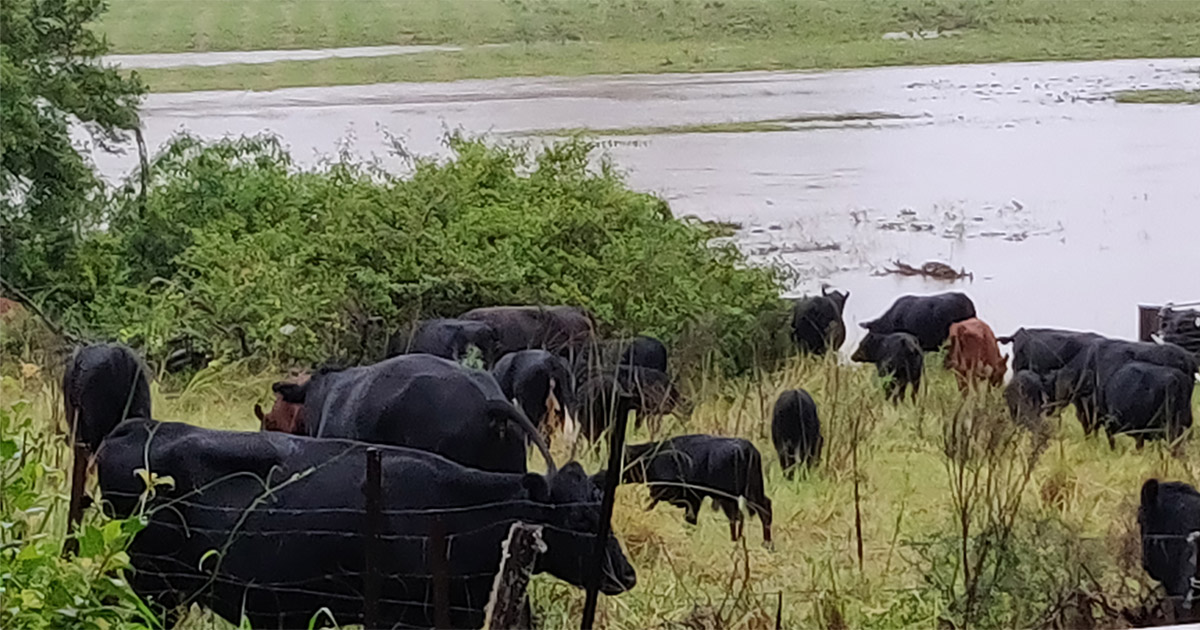Minimizing Livestock Losses During And After Floods

Table of Contents
Pre-Flood Preparation: Building a Resilient Livestock Operation
Proactive flood preparedness is crucial for minimizing livestock losses. By implementing a robust plan and strengthening your infrastructure, you significantly improve the chances of protecting your animals.
Creating a Flood Emergency Plan
A comprehensive flood emergency plan is your first line of defense. This plan should be detailed and regularly practiced. Consider these essential elements:
- Identify high-risk areas: Pinpoint areas on your farm most susceptible to flooding, including low-lying pastures and areas near rivers or streams. Mapping these areas is crucial for effective evacuation planning.
- Develop evacuation routes: Create multiple escape routes for your livestock, considering both the terrain and the potential flood paths. These routes should lead to designated safe zones.
- Establish designated safe zones: Identify high-ground areas on your property or nearby that can serve as temporary refuge for your animals during a flood. Ensure these locations offer sufficient space and are easily accessible.
- Prepare emergency supplies: Stockpile essential supplies including ample feed, clean water, veterinary medications, and a well-stocked animal first-aid kit. Don't forget essential tools for animal handling and any specific needs of your animals.
- Designate responsible personnel: Assign specific roles and responsibilities to your team members for tasks such as animal herding, transportation, and emergency contact. Clear communication during a crisis is key.
- Practice your plan regularly: Conduct regular drills to familiarize your team with the evacuation plan and refine the process. This ensures everyone knows their roles and can react effectively in a real emergency.
Strengthening Infrastructure
Investing in flood-resistant infrastructure is a vital aspect of flood preparedness for livestock. This protects your animals and your property.
- Elevate feed storage and essential equipment: Raise feed storage and crucial equipment above potential flood levels to prevent damage and ensure access during an emergency.
- Improve drainage around barns and pastures: Enhance drainage systems around your barns and pastures to divert water away from structures and prevent waterlogging.
- Reinforce fences and gates: Strengthen your fences and gates to withstand the pressure of floodwaters. Strong, well-maintained fences prevent animals from escaping or getting swept away.
- Consider building elevated platforms for animals: Construct elevated platforms or areas where animals can seek refuge during rising waters, particularly for vulnerable animals.
- Invest in flood-resistant structures: Explore options for constructing flood-resistant barns and other structures, using materials and designs that can withstand flood damage.
Identifying and Addressing Vulnerable Animals
Some animals are more vulnerable to the stress and physical impact of floods than others.
- Recognize animals at higher risk: Identify young, elderly, sick, or injured animals who may require extra care and attention during a flood.
- Develop specific care plans: Develop individualized care plans for vulnerable animals, outlining specific needs and procedures for their safe evacuation and handling.
- Pre-position necessary equipment: Ensure that specialized equipment required for handling or transporting vulnerable animals is readily accessible.
During the Flood: Protecting Your Herd
Once flooding commences, swift and decisive action is paramount. Your preparedness will pay off here.
Evacuation and Relocation
Timely evacuation is critical to saving your livestock.
- Follow your pre-planned evacuation route: Adhere to your established evacuation route to ensure efficient and safe relocation of your animals.
- Prioritize the safe movement of animals: Focus on moving animals to higher ground safely and efficiently, minimizing stress and injury.
- Utilize appropriate transportation: Employ trailers, boats (if necessary), and other suitable transportation methods depending on the situation.
- Ensure sufficient personnel: Have adequate personnel to handle the animals safely and efficiently during the relocation process.
- Keep animals calm: Minimize stress on animals during transport by using calm handling techniques and providing reassurance.
On-Site Flood Management
If evacuation isn't possible, on-site management becomes crucial.
- Secure loose objects: Remove or secure any loose objects that could injure animals, such as debris or fallen branches.
- Monitor water levels constantly: Keep a close watch on rising water levels and adjust your strategies as needed.
- Provide supplemental feed and water: Ensure your animals have access to adequate feed and clean water.
- Check for injuries: Regularly examine animals for injuries and provide immediate first aid.
- Prepare for rescues: Be ready to rescue animals trapped in rising waters using appropriate safety equipment.
Emergency Contact Information
Maintaining open communication during a flood is crucial.
- Keep emergency contact details readily accessible: Have readily accessible contact details for local emergency services, veterinarians, and your support network.
- Alert authorities: Notify relevant authorities about your livestock situation and any assistance you may require.
- Inform neighbors and family: Inform your neighbors and family about your plans, seeking their help if needed.
- Establish a communication system: Establish a clear communication system within your team during the emergency, ensuring everyone stays informed.
Post-Flood Recovery: Assessing and Addressing Damage
The recovery phase requires careful assessment and decisive action to minimize long-term losses.
Livestock Health Assessment
Post-flood, animal health is paramount.
- Check for injuries, infections, and stress: Thoroughly examine all animals for injuries, infections, and stress-related illnesses.
- Contact a veterinarian: Seek immediate veterinary attention for any animal exhibiting signs of illness or injury.
- Provide appropriate medication and treatment: Administer necessary medications and treatments according to veterinary guidance.
- Implement strict hygiene protocols: Maintain strict hygiene protocols to prevent the spread of disease.
- Monitor animals closely: Continue to monitor animals closely for any signs of distress or illness.
Damage Assessment and Repair
Assess and repair damage to your infrastructure.
- Inspect structures for damage: Carefully inspect barns, fences, and other structures for flood damage, noting any structural weaknesses.
- Begin repairs safely: Begin repairs and renovations as soon as it's safe to do so, prioritizing critical repairs.
- Clean and disinfect: Thoroughly clean and disinfect contaminated areas to prevent the spread of disease.
- Assess feed and water sources: Check feed and water sources for contamination and replace contaminated supplies.
- Implement improved flood prevention: Consider implementing improved flood prevention measures to protect your livestock in future events.
Financial Assistance and Support
Explore available financial and support options.
- Contact your insurance provider: Contact your insurance provider to file a claim for flood-related damages.
- Explore government assistance programs: Research and apply for any available government assistance programs for farmers affected by floods.
- Seek support from agricultural organizations: Reach out to local agricultural organizations for guidance and support.
- Consider community support: Explore community crowdfunding or other support networks to help with recovery efforts.
Conclusion
Minimizing livestock losses from floods requires a multifaceted approach, combining pre-flood preparedness, effective actions during the flood, and a systematic post-flood recovery strategy. A well-defined flood emergency plan, robust infrastructure, and swift action are vital. By taking proactive steps and implementing the strategies outlined in this guide, you can significantly reduce the risk to your livestock and protect your livelihood. Implement a comprehensive plan to minimize livestock losses from floods and protect your valuable livestock. Learn more about flood preparedness and disaster response for farmers [link to relevant resources/further reading]. Don't wait for a flood – prepare now to secure the future of your livestock operation.

Featured Posts
-
 Nhl Referees And Their Apple Watches A New Era In Officiating
May 07, 2025
Nhl Referees And Their Apple Watches A New Era In Officiating
May 07, 2025 -
 Play Station Podcast Episode 512 True Blue Review And Analysis
May 07, 2025
Play Station Podcast Episode 512 True Blue Review And Analysis
May 07, 2025 -
 Simone Biles Bahamas Trip Black Bikini Fun And Friends
May 07, 2025
Simone Biles Bahamas Trip Black Bikini Fun And Friends
May 07, 2025 -
 Could John Wicks Most Underrated Character Finally Return After A Decade
May 07, 2025
Could John Wicks Most Underrated Character Finally Return After A Decade
May 07, 2025 -
 Ovechkin Vozvraschenie V Dinamo Plany Na Buduschee
May 07, 2025
Ovechkin Vozvraschenie V Dinamo Plany Na Buduschee
May 07, 2025
